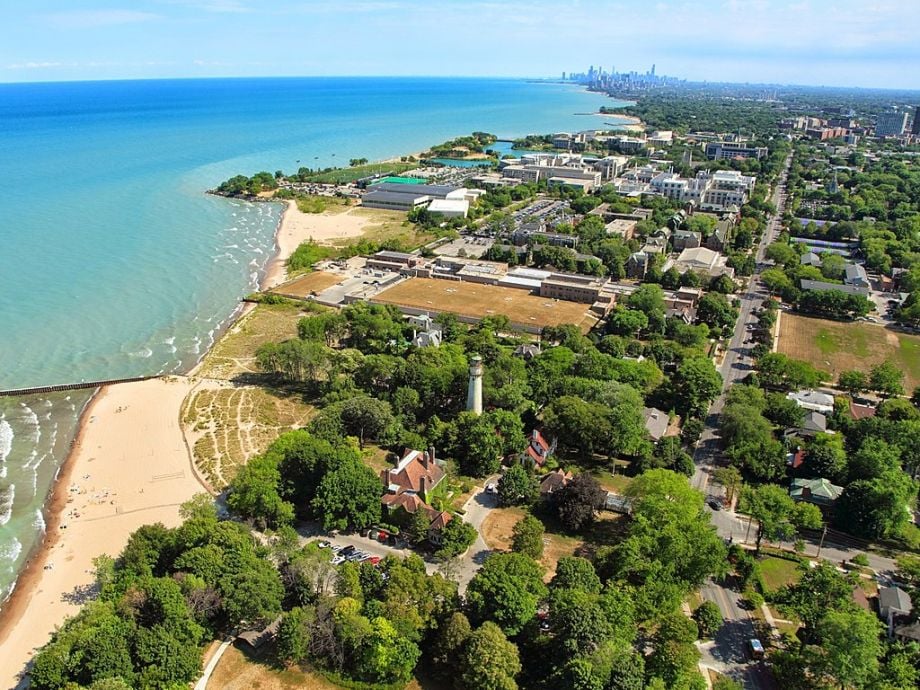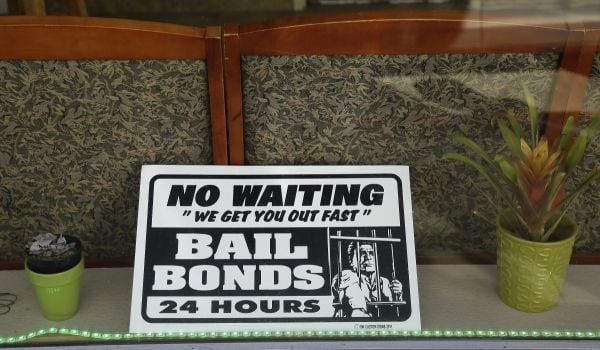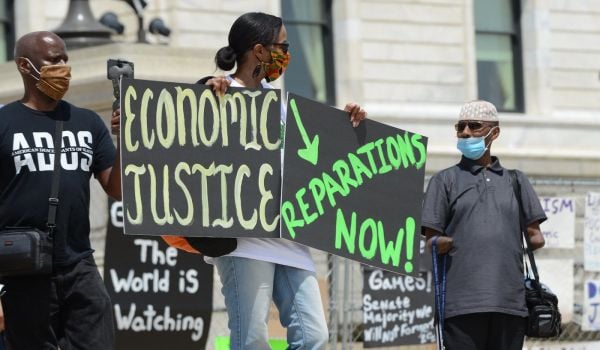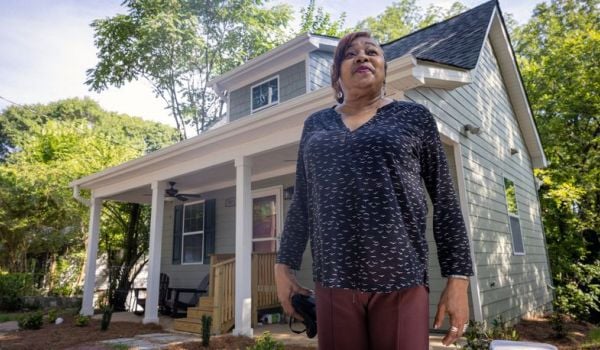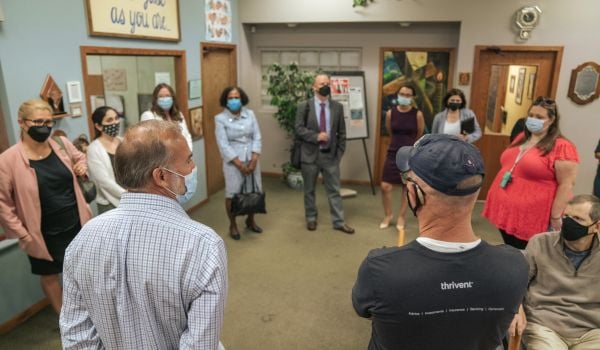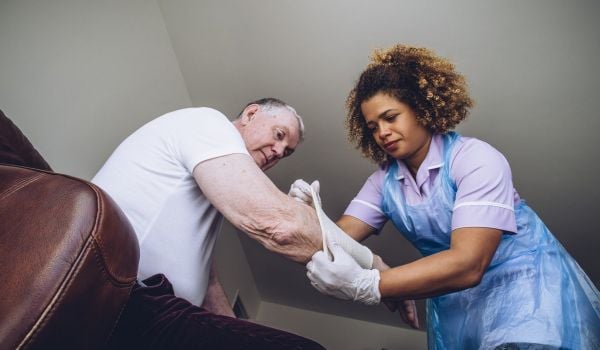Ramona Burton bought her house, a three-bedroom ranch style home in Evanston, Illinois, 46 years ago. When her husband died, she finished paying off the mortgage with his savings. Over the years, Burton, who worked for years at a collection agency and who currently sells knives over the phone, has wanted to make improvements to the home but hasn’t had the money. Her windows dated back to 1954, when the house was built. The single-pane windows require storm windows, which she left on year-round. Her roof had not been repaired in years, and the shingles were stalling to fall off.
Then she saw a presentation at her church. The City of Evanston had enlisted the actor Danny Glover to visit the parish and other places of worship to tell Black residents about a new “Restorative Housing Fund.” The fund would allocate $25,000 worth of housing improvements, mortgage assistance or downpayments to Black Evanston residents who lived in the city between 1919 and 1969.
Burton applied. She had scrupulously kept documents proving her lifelong residency in Evanston, including her high school ID and her birth certificate. When a friend called to tell her that she won the city’s lottery and would receive one of the coveted 16 slots, she was excited. It wasn’t just because of long-needed improvements, but because the city had intended the payments to be reparations for racist zoning laws and redlining that had harmed Black Evanston residents.
“I appreciate the effort and the recognition that Evanston is the first city in the United States that are doing reparations,” she says. But much more work remains to be done, Burton says.
The Restorative Housing Fund was announced in 2021 and is funded with 3% tax on recreational cannabis sales. It’s part of a larger reparations commitment, meant as a redress for slavery as well as subsequent anti-Black laws and inaction perpetrated by the city. The funds were approved in 2019 and will pay $10 million to Black Evanston residents over the course of 10 years. The housing fund is just the first part of this commitment; the city will hold additional public hearings to decide on how to disburse future payments.
122 applicants for the housing fund were verified by the city, of which 16 were randomly selected in the city’s lottery. The first round of funds total $400,000, with each resident receiving $25,000 to go toward home improvements, mortgage assistance or a downpayment for a house. Of the 16 selected, all but one has either had their funds disbursed or is in the process of being awarded funds, according to Robin Rue Simmons, a former alderman who championed the legislation and now runs the nonprofit First Repair to promote local reparations policies around the country.
The prioritization of homeownership assistance is a response to a history of redlining in Evanston which exacerbated the city’s racial wealth gap between Black and White homeowners. Simmons says the funds are meant to “repair the wealth that was stripped away through housing, opportunity and home equity.”
In August 2020, the city of Evanston published a report laying out a racist history in which the city “supported and created systems to segregate, limit, deny, and control Black citizens.” For a brief time at the beginning of the twentieth century the percentage of Black homeowners in Evanston were comparable to White homeowners, according to the report. But Black homeownership was eroded through segregationist policies, which led to overcrowding and higher housing prices resulting from forced scarcity. In addition to redlining and segregation, the report details a 1921 city ordinance that rezoned Black residential neighborhoods for commercial use, displacing residents, and subsequent “slum clearance” initiatives that demolished homes in Black neighborhoods.
The fund does not provide direct cash payments. Burton hired contractors, selected with the assistance of a city-provided project manager. (Her son’s friend, a realtor, also helped select some of the bids.) The contractors were paid through the city in installments, with half of the money arriving upfront, a quarter halfway through the job and the final quarter upon completion, Burton says.
The narrow parameters and limited amount of funds have led some Black residents to question whether the program should truly be called reparations. A contingent of residents opposed the program on this basis, concerned it would set a harmful precedent by underestimating the harm Black Evanston residents faced and continue to face. There’s also concern that ongoing housing inequalities — such as uneven home appraisals for Black homeowners — could again erase progress. And while it was intended to spur Black homeownership, a $25,000 down payment is not enough to secure a home in the current market, some potential applicants found.
Simmons’ response to the pushback by other legislators and Black residents is that there is an urgency behind the legislation and that it provides an opening to other financial redress. Making the perfect the enemy of the good, she says, would be a mistake.
“Our thinking is that we don’t wait until there is the perfect harm report, or the perfect conditions or the absolute answer to repair,” she says. “Reparations is a complex and protracted process that must start now. It is an emergency, the conditions of Black America and Black Evanstonians are an absolute emergency.”
Approving any kind of reparations program has significant challenges. There is a concern that the 2019 legislation could be vulnerable to lawsuits — any law that repairs harms on the basis of race risks violating the 14th Amendment’s Equal Protection clause — although Simmons says the legislation was crafted to avoid such attacks. Yet an upcoming Supreme Court decision on affirmative action could empower legal challenges to reparations on this basis.
“We expect that there will be challenges, we’ve had threats already,” Simmons says, including from a right-wing organization called Judicial Watch which claimed that Evanston did not turn over documents regarding the reparations program in response to their Freedom of Information Act request.
The program’s funding source is also in doubt. The city was projected to have three marijuana dispensaries by this time, but due to regulatory delays, there is only one. Simmons says the city is looking for other revenue sources, including general funds, other taxes and funds from the American Rescue Plan.
Burton is grateful for the money but is also unsure about the program’s narrow parameters. “I still think more could be done,” she says. “It shouldn’t have been restricted to telling you what the money had to be used for.”
She questions whether targeting the money to homeowners like herself was the best way to help those who have suffered the most. “Everybody doesn’t own a home,” Burton says. “Say, somebody would need the money to help on the rent, or help on their groceries or they might need a new car, or they’re going to school…There’s so many, many other things that I think the money could be used for.”
Burton is fortunate. Her family owned her home when she was growing up. She says her father was a chauffeur to Oscar F. Mayer, the German-born bratwurst entrepreneur who died in Chicago in 1955. Mayer lent her father the money to buy his first home, she says, a loan he likely would not have been able to get from a bank.
She’s still deciding what to do with the remaining funds from the city. Replacing her windows cost about $12,000. Fixing her roof was $5,000. An electrician to help with her home’s energy needs will be about $3,000. She is considering fixing her chimney, getting a new fence or getting her room painted with the remaining amount. For now, Burton appreciates her new windows, which are double-paned, making them easier to open up in the summer without having to remove a cumbersome storm window.
“I can open them and at least get fresh air now,” she says.
This article is part of Backyard, a newsletter exploring scalable solutions to make housing fairer, more affordable and more environmentally sustainable. Subscribe to our weekly Backyard newsletter.

Roshan Abraham is Next City's housing correspondent and a former Equitable Cities fellow. He is based in Queens. Follow him on Twitter at @roshantone.



